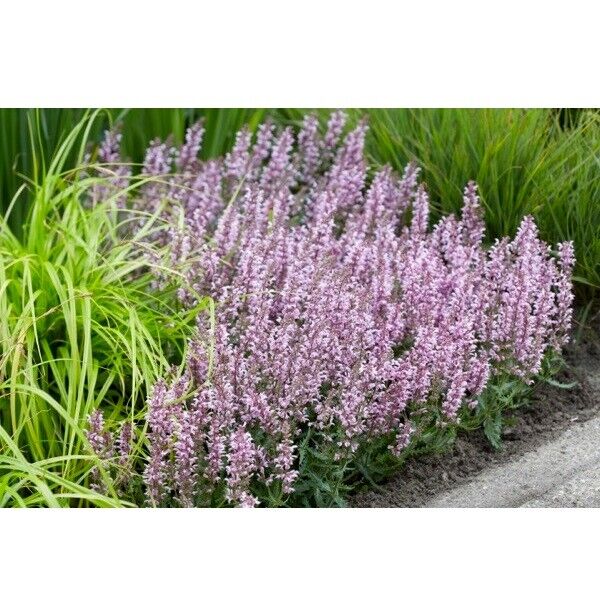

SALVIA NEMOROSA~FEATHERS FLAMINGO~PINK SAGE PLANTS AROMATIC HARDY PERENNIAL WOW!
BUY IT NOW!!! PRICE BREAK ON QUANTITY!!!
1 PLANT * 3 PLANTS * 6 PLANTS OR 12 PLANTS
Culture
Easily grown in average, dry to medium, well-drained soil in full sun. Prefers moist, gravelly or sandy soils with good drainage, but tolerates drought. Plants may repeat bloom throughout the summer and even into fall, but need regular moisture and deadheading to encourage this. Plants may become somewhat floppy and open up as the summer progresses, particularly in humid climates. If plants flop or otherwise depreciate in summer to the point where they look unsightly, consider cutting them back to the basal foliage. In any event, cut plants back after flowering has concluded.
Noteworthy Characteristics
Salvia nemerosa, commonly known as
woodland sage, violet sage or salvia, is an erect, many-branched,
woody-based, clump-forming perennial that typically grows 1.5-3' tall
and to 2' wide. It is native to Europe and west-central Asia. Lavender
to violet blue flowers (0.5” long) subtended by tiny reddish-purple
bracts bloom in dense, terminal, upright, spike-like racemes rising well
above the foliage from late spring to early summer, with sporadic
reblooming through the rest of summer and into early fall. Flowers are
attractive to bees and butterflies. Notched, wrinkled, ovate-lanceolate
to oblong, medium green to gray-green leaves (to 4” long) are aromatic
when bruised.
The genus name Salvia comes from the Latin word salveo meaning "to save or heal", in reference to the purported medically curative properties attributed to some plants in the genus.
Specific epithet means "growing in groves or woods", in reference to the native habitat of this species.
Salvia Feathers has unique deeply incised scented foliage that gives the
plant an airy and elegant look. Feathers Flamingo has soft pink flowers
with large spikes and blooms even in the first year. In nature it is
the earliest flowering Salvia. The flowering period is also longer than
for other Salvia: from May to August with a rebloom in autumn.
Medium green leaves are aromatic when crushed. Dense
terminal spikes of violet-blue flowers rise above the foliage to 24”
tall from late spring to early summer. Will repeat bloom with
deadheading through summer and into fall.
Uses
Perennial borders, cottage gardens, butterfly gardens, wild gardens or along paths. Plant in groups for interesting accent.




